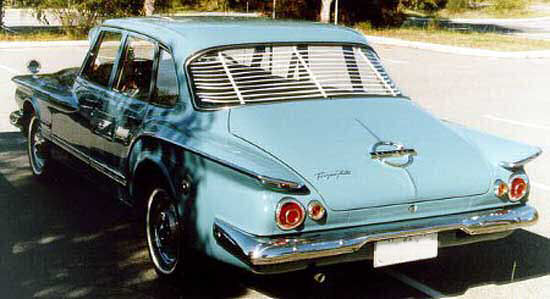|
|
|
Privacy Policy | Editorial Policy | Join the Association | List of Members | Contact us | Index | Links | Print this page |
|
|
Out in the shed with Ted
Ted McEvoy. |
|
|
|
|
|
PBS.
Each year the Government increases the patient's contributions for the cost of his/her medicines by a factor equal to the CPI. In accordance with this policy, from the 1 January, 2011, the amount of money you pay for prescriptions covered by the PBS scheme rose by a small amount. The new costs are:
General patients up to $34.20 † Concession card holders $5.60 † DVA Gold card $5.60 †
If you have a Department of Veterans’ Affairs (DVA) White Card for specific conditions and your medication is for those conditions you will pay $5.60, otherwise you pay the general amount.
† If you choose a more expensive brand of medicine, or if your doctor prescribes one, you may need to pay more—the extra amount you pay won’t count towards your PBS Safety Net.
What do I need to do?You need to keep a record of your PBS medicine on a Prescription Record Form (PRF), which you can get from your pharmacy. Each time you have a PBS medicine supplied, give the form to the pharmacist so it can be recorded. Your pharmacist might be able to keep a computer record for you, but if they can’t or if you visit different pharmacies, its best to keep your own records.
If you have a family, ask your pharmacist about combining the amounts recorded for your family Safety Net total.
What happens once I reach the Safety Net threshold? |
|
|
I take my children everywhere, but they always find their way back home.
|
|
|
Speed bump!
This bloke got sick of cars speeding in front of his home so he designed and built a speed bump to slow them down, it certainly worked, see HERE.
|
|
|
There was a knock on the door this morning, I opened it and there was a young bloke standing there who said: "Hello - I'm a Jehovah's Witness". I said "Come in and sit down, what do you want to talk about"? He said, "Damned if I know, I've never got this far before".
|
|
|
Qantas’ A380.
The Australian Transportation Safety Board ATSB have released their preliminary report reporting, that the flight crew consisted of 5 pilots: the captain (PIC), the first officer (FO), a second officer (SO), a second captain undergoing training as a check captain (CC) and a supervising check captain (SCC) overseeing the training of the second captain.
The flight was planned to fly to the east of active Merapi volcano. The PIC was pilot flying in the left hand seat, the FO was in the right hand seat, the CC in the centre observer's seat, the SCC in the left hand observer's and the SO in the right hand observer's seat.
The crew reported later, that following departure from Singapore's runway 20C and after retracting the gear and flaps they were climbing at 250 knots (CLIAS) through 7,000 feet when they heard two almost coincident loud bangs. The PIC immediately selected altitude and heading hold on the master control panel and the first officer started his stopwatch. The crew observed a slight yaw, the airplane levelled off. The crew expected the autothrottle to reduce engine thrust however it became evident autothrottle was no longer active and the engine thrust was reduced manually in order to maintain 250 knots. Both flight directors remained available to the crew. An engine #2 overheat warning was displayed on the Electronic Centralised Aircraft Monitor (ECAM) soon followed by multiple messages.
The crew actioned the engine overheat checklist which required the engine to be throttled back to idle and monitor the situation for 30 seconds. During those 30 seconds a PAN call was transmitted. The FO noticed a fire indication for engine #2 for about 1-2 seconds before the display returned to overheat. The crew elected to shut the engine down, following the shut down the ECAM indicated the engine had failed.
The crew assessed that there was serious damage and elected to discharge a fire bottle into engine #2, but contrary to their expectations they did not get indication that the bottle had discharged. They discharged again but again received no confirmation that the bottle had discharged. They then decided to discharge the second bottle into engine #2 but again received no confirmation.
The crew elected to continue the checklist and noticed that #2 was shown failed, engines #1 and #4 in degraded mode, #3 was operating in alternate mode. The ECAM continued to show numerous messages.
The flight crew recalled they received the following failures:
- engine #2 failed - engine #1 and #4 in degraded mode - green hydraulics low pressure and low quantity - yellow hydraulics engine #4 pump error - failure of AC electrical busses 1 and 2 - flight controls in alternate mode - wing slats inoperative - ailerons partial control only - reduced spoiler control - landing gear control and indicator warnings - multiple brake system messages - engine anti-ice and air data sensor messages - multiple fuel system messages including fuel jettison fault - center of gravity messages - autothrust and autoland inoperative - #1 engine generator disconnected - left wing pneumatic bleed leaks - avionic system overheat
The crew discussed whether to immediately return to Singapore, climbing or holding and decided the best option was to maintain altitude while processing the ECAM messages.
|
|
|
I hate all this terrorist business!! I used to love the days when you could look at an unattended bag on a train or bus and think to yourself - ‘I’m having that’
|
|
|
The crew frequently assessed the fuel on board which was sufficient to complete the checklist procedures. The aircraft remained controllable. They advised ATC they would need about 30 minutes to process the ECAM messages and requested to hold for that period. Singapore cleared the flight for a holding east of Singapore, the flight crew advised however they needed to remain within 30nm of Singapore Airport in case they needed to land immediately. ATC advised that residents at Batam had found debris on the ground, then vectored the aircraft to a 20nm holding pattern east of Singapore Airport.
While the crew processed the ECAM messages the SO was dispatched to the cabin to assess the damage to the #2 engine. While he walked through the cabin a passenger, also Qantas pilot, pointed out that pictures from the vertical fin mounted camera suggested a fluid leak from the left hand wing. The SO walked down to the lower deck of the passenger cabin and observed damage to the wing and a fluid leak that appeared to be about 0.5 meters wide. He could not see the turbine area of the engine from any position in the cabin. The SO returned to the cockpit and reported his observations.
The crew stopped re-arranging the fuel system doubting the integrity of the system. They could not dump fuel due to the fuel jettison error message. The operator sent ACARS messages that they had received multiple ACARS messages indicating various system failures from the automatic reporting system, the crew was busy with the ECAM messages and found time to just acknowledge the ACARS transmissions.
The PIC and SSC made a number of announcements to the passengers advising that they had technical problems, they were working to address these issues and it would take some time to do so. Subsequently the SO and SSC went to the cabin frequently to check the left hand side of the aircraft and to provide feedback to cabin crew and passengers.
It took about 50 minutes to complete the checklist procedures associated with the ECAM messages. During that time the autopilot was engaged. The crew then assessed which systems were operative, degraded and failed and discussed the impact on landing performance. They also believed that engine #1 may have been damaged and discussed a number of concerns regarding fuel imbalances that had been indicated by the ECAM.
The crew determined their landing weight would be 440 tons, about 50 tons above maximum landing weight, and computed the required landing distance with the systems available.
The computation showed, that a landing on runway 20C was feasible with 100 meters of runway remaining. The crew elected to proceed on basis of this computation and advised ATC accordingly. The crew advised further they needed emergency services at the upwind end of the runway, fluid was leaking from the left wing that was likely to include hydraulic fluid and fuel.
Prior to leaving the holding pattern the crew discussed controllability of the aircraft and performed a number of manual checks at the holding speed. The crew requested a 20nm final to runway 20C to commence from 4000 feet, ATC fulfilled that request.
While the crew began the approach and lowered flaps they conducted
further controllability tests at the approach speed and decided the
airplane was controllable. The landing gear was lowered using the
emergency extension procedure, a further controllability check was
conducted.
The approach speed was computed at 166 KIAS. The crew was aware that reverse thrust was available only from the #3 engine, no leading edge slats were available, there was limited aileron and spoiler control, anti-skid was restricted to the body gear only, there was limited nose wheel steering and the nose would likely pitch up on landing. An ECAM message indicated they could not apply maximum braking until the nose wheel was on the runway. The flaps were extended to position 3.
ATC vectored the aircraft for a 20nm final progressively descending the aircraft to 4000 feet, the PIC was aware that speed control was necessary to avoid an aerodynamic stall and a runway overrun. Consequently the PIC set engine #1 and #4 to symmetric thrust and controlled the speed of the aircraft with the #3 engine. The autopilot disconnected a number of times during the initial approach, the airspeed dropped to 165 KIAS. The PIC reconnected the autopilot a number of times but when the autopilot disengaged again at 1000 feet he decided to fly manually for the remainder of the flight. Due to the limited runway margin available the CC reminded the PIC that the landing had to be done without flare and there would be a slightly higher nose up attitude during touch down.
The flight crew briefed the cabin crew for a possible runway overrun and evacuation.
The airplane touched down on Singapore's runway 20C 109 minutes after departure and within 6 seconds the nose wheel touched down and maximum braking was applied, reverse thrust was selected on the #3 engine. The crew felt that initially the deceleration was slow but with maximum braking and reverse thrust the airplane began to decelerate. The PIC felt confident the airplane would stop on the runway after the airplane had decelerated to 60 knots, and moved engine #3 gradually out of maximum reverse thrust. Manual braking was continued and the airplane stopped about 150 meters before the runway end.
|
|
|
Three mischievous old grannies were sitting on a bench outside a nursing home when an old Grandpa walked by. And one of the old Grandmas yelled out saying, "We bet we can tell exactly how old you are." The old bloke said, "There is no way you can guess it, you old fools." One of the old Grandmas said, "Sure we can! Just drop your duds and we can tell your exact age." Embarrassed just a little, but anxious to prove they couldn't do it, he dropped his duds. The Grandmas asked him to first turn around a couple of times and to jump up and down several times. Then they all piped up and said, "You're 87 years old!" Standing with his pants down around his ankles, the old bloke asked, "How in the world did you guess?" Slapping their knees and grinning from ear to ear, the three old ladies happily yelled "We were at your birthday party yesterday!"
|
|
|
The crew then shut down the remaining 3 engines, the aircraft electrical systems went into a configuration similar to an emergency electrical power mode which blanked most of the cockpit displays. Just prior to the displays going blank the crew observed the body gear temperature rising to 900 degrees C and above. After some confusion which of the VHF radios remained available the FO contacted fire services who requested engine #1 to be shut down. The crew replied engine #1 was already shut down but was advised that the engine continued to run. The crew recycled the engine #1 master switch, but the engine continued to run. The crew used the emergency shut off switch and fire extinguisher bottles, but the engine continued to run. The fire commander advised there was fuel leaking from the left hand wing, the FO advised of the hot brakes and requested fire retardant foam to be applied over that fuel. The fire commander complied with that request.
After assessing the checklists the crew decided the safest course of action would be to disembark the passengers through the right hand doors via stairs. A single door was elected so that the passengers could be counted and the other doors remained available should a rapid evacuation via slides become necessary.
Crew contacted the operator via mobile phone to check how to shut engine #1 down.
The first passenger disembarked through the #2 main deck forward door 55 minutes after landing, the last passenger disembarked about 1 hour later.
The crew was advised by the fire commander that 4 tyres of the left body gear had deflated. Further attempts to shut engine #1 down were without success, operator advice to activate a number of circuit breakers in the electronic bay also remained unsuccessful. Attempts were made to re-arrange the fuel supply in order to starve engine #1, however due to lack of electrical power that was not possible.
Finally the decision was made to drown the engine with fire fighting foam. The engine finally stopped about 127 minutes after landing.
No injuries occurred on board of the aircraft. Two persons received minor injuries on the ground at the Island of Batam.
The PIC had a total experience of 15,104 hours with 570 on the A380, the FO had 11,279 hours with 1,271 hours on the A380, the SO had 8,153 hours with 1,005 on type, the CC had 20,144 hours with 806 on the A380 and the SCC had 17,692 hours with 1,345 hours on type.
All I can say is, “If you have to go flying, it’s good to know there are blokes like those up the front !!”
War Veterans Retreat.
Greg and Anne Carter run a Veterans Retreat, called Cockatoo Ridge which is only 5 minutes from Bairnsdale (Vic), on the Great Alpine Road. Eligible guests are Returned Service Personnel, their partners and War Widows (no children or pets). There is no charge but a donation is welcome to assist with the up keep.
Click HERE for a brochure.
|
|
|
Lucky??
An entire crew of a B-29 (12 aviators) was rescued by a US submarine after their plane was shot down in 1944/5, 70 miles off the coast of Japan. The entire rescue was filmed in colour but was forgotten and sat in a cupboard until recently.
The film was eventually sent to a Denver (US) TV station that contacted one of the rescued airman and then viewed the whole thing to its audience. The film also shows the transfer of the rescued airmen to another submarine that is likely headed back to port before the one that accomplished the rescue.
You can see it HERE.
|
|
|
Losers have meetings, winners have parties.
|
|
|
Thank God for mad people – there aren’t a lot of us left…….see HERE
|
|
|
Damned if I can remember where I left it, any help would be greatly appreciated…. |
|
|
|
|
|
Q. Where do you find a dog with no legs? A. Right where you left it.
|
|
|
Why men drink!!
A considerable amount of research has been done into why some men sometimes drink to extreme, and we're pleased to be able to say that we have been sent a copy of the results.
You can see them HERE.
|
|
|
The Mighty Valiant.
January 18, 1962: The first
Valiant car was released by Chrysler in Adelaide and promptly sold out
within days of its release. Known as the "R" Series, the Valiant was
Those first "R" series
Valiants were fully imported from the USA and came with the
On the engine front was the
unstoppable 225 Slant Six with a single barrel Carter Ball
There were only 1,008 R Series Valiants sold with demand far exceeding supply. It was in March of 1962 that Chrysler introduced the tidied up, but still imported, version - the "S" Series Valiant.
The S Series Valiants were
basically a twin of the R models with some outward cosmetic changes.
Gone was the fake wheel mould on the boot lid, replaced by a neat
chromed emblem bearing the word "VALIANT". The "cat's eyes" tail lights
on the R were gone, and instead a more conventional tail light lens and
indicator assembly was fitted. The chequered grille was now very neat
looking and side chrome work was slightly changed also. The floor
mounted manual shift was now on the steering column and various other
minor things such as bottom ball joints now of a design that would
Chrysler sold 10,009 S series Valiants, at an on-road price of £1,255 ($2,510) and again were inundated with orders.
On the 30th May 1963, Chrysler introduced its Australian manufactured Valiant – the AP5 model, the letters “AP" represented Australian Production (not A Porky-la Valiant).
USB App.
These days you can download music, movies, pics, almost anything, over the internet, all for free. This has to be hurting someone as sales for money has to be shrinking with profits going south at a rate of knots. There is also all sorts of things that you can now plug into one of the USB ports on your computer, backup hard drives, IPods, card readers, camers etc. Well, the French have combined the download thing with the USB thing and have come up with a beaut App that is really going to hurt and it’s cheap too, only €9.95. See HERE
Radio.
A few years ago there was a great little joke told over the radio – HERE it is.
|
|
|
Q: Did ya hear
about the new "morning after" pill for men?
|
|
|
Secure your load.
Recently, in a land far far away, there was an accident that involved a few people in a small car. The occupants had recently bought a 25 litre tin of paint which they had on the back seat. The ambulance was called but the ambo driver wouldn't let the female paramedic out of the ambulance because she couldn't stop laughing, he said it wasn't professional. Why??? See HERE.
|
|
|
USB App.
These days you can download music, movies, pics, almost anything, over the internet, all for free. This has to be hurting someone as sales for money has to be shrinking with profits going south at a rate of knots. There is also all sorts of things that you can now plug into one of the USB ports on your computer, backup hard drives, IPods, card readers, camers etc. Well, the French have combined the download thing with the USB thing and have come up with a beaut App that is really going to hurt and it’s cheap too, only €9.95. See HERE
Radio.
A few years ago there was a great little joke told over the radio – HERE it is.
Q: Did ya hear about the new "morning after" pill for men? A: It changes the man's blood type and D.N.A
Secure your load.
Recently, in a land far far away, there was an accident that involved a few people in a small car. The occupants had recently bought a 25 litre tin of paint which they had on the back seat. The ambulance was called but the ambo driver wouldn't let the female paramedic out of the ambulance because she couldn't stop laughing, he said it wasn't professional. Why??? See HERE.
|
|
|
The police are thinking about INCREASING the permissible level of alcohol in the blood from 0.5 to 0.8 mg/l again, since they have discovered that the number of accidents has gone up. They think this is due to more men than before handing over the driving to their wives. See how tough I are…
|
|
|
Don’t mess with us old buggers.
The hostess in the lobby of a large and expensive hotel informs a senior citizen that he is not permitted to enter the lobby or any public part of the hotel in his swimmers. Thatt was just asking for trouble, she definitely shouldn’t have done that – see HERE.
|
|
|
|
|
|
|
|
|
Blessed are those who are cracked, for they are the ones who let in the light!
OK, I'll be going to my room now!!
|
|
|
Back Go to page: 1 2 3 4 5 6 7 8 9 10 11 12 13 14 15 16 17 18 19 20 Forward |




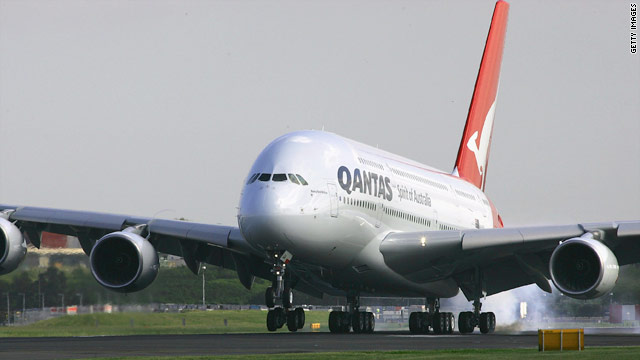
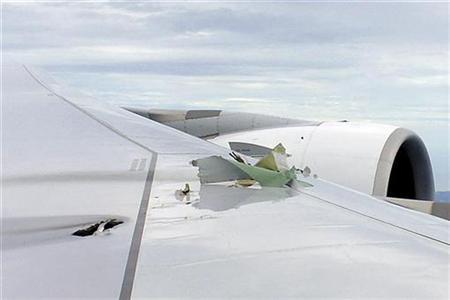
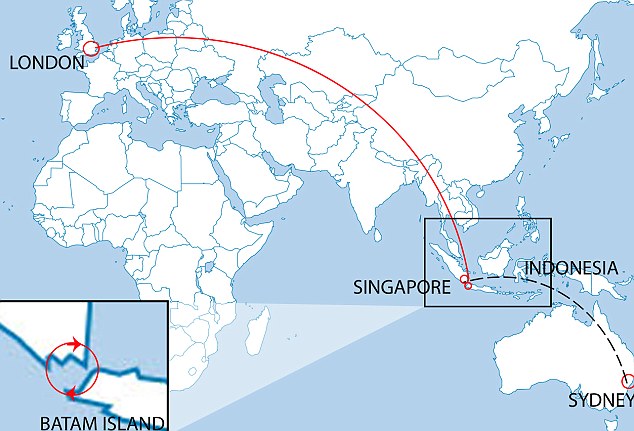
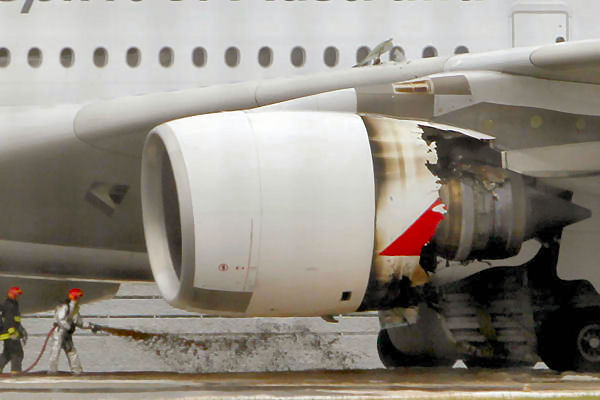
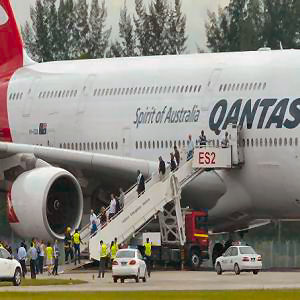
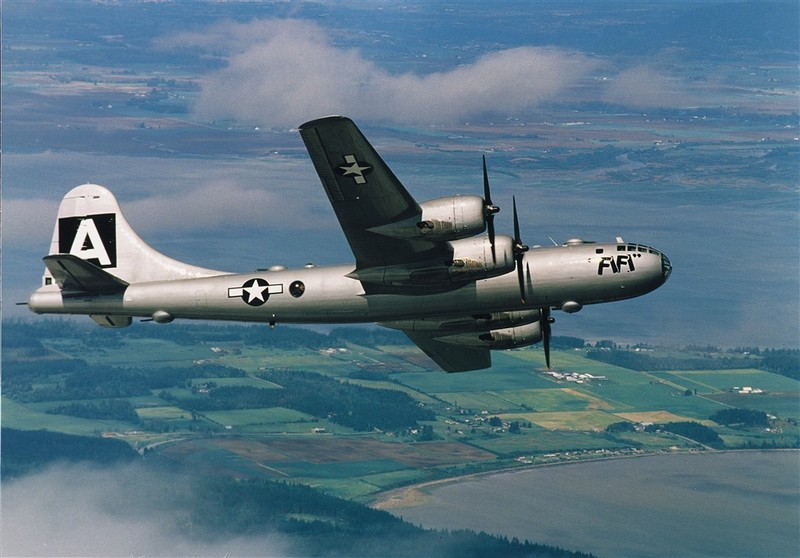

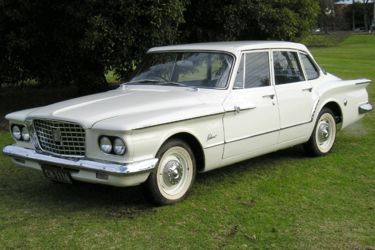 an instant success in a market where people wanted cars that were roomy
enough for the whole family, but not tanks. They were impressed by the
Valiant’s performance - 145 bhp (108 KW) from a 3.7 litre six cylinder
engine. This was a lot of power when you consider the Holdens and the
Fords of the time had only 75 BHP and 85 BHP respectively. (Today, the
Toyota Carolla’s 1.8 Litre engine develops 135 BHP). Whilst not everyone
was taken instantly by the Valiant’s looks, the general consensus was
that the car had a "modern", almost space-age quality about it.
an instant success in a market where people wanted cars that were roomy
enough for the whole family, but not tanks. They were impressed by the
Valiant’s performance - 145 bhp (108 KW) from a 3.7 litre six cylinder
engine. This was a lot of power when you consider the Holdens and the
Fords of the time had only 75 BHP and 85 BHP respectively. (Today, the
Toyota Carolla’s 1.8 Litre engine develops 135 BHP). Whilst not everyone
was taken instantly by the Valiant’s looks, the general consensus was
that the car had a "modern", almost space-age quality about it.  choice of a 3 speed, very sloppy, floor mounted manual transmission, or
the 3 speed Torqueflite automatic. The auto was engaged using
press-buttons to the right of the instrument cluster and proved to be
one of the finest transmissions available. On the other side of the
instrument cluster, it was possible to order a press-button heater unit.
If you wanted music, it was blasted out via the Moparmatic Deluxe
Pushbutton Transistor Radio in the centre of the dash.
choice of a 3 speed, very sloppy, floor mounted manual transmission, or
the 3 speed Torqueflite automatic. The auto was engaged using
press-buttons to the right of the instrument cluster and proved to be
one of the finest transmissions available. On the other side of the
instrument cluster, it was possible to order a press-button heater unit.
If you wanted music, it was blasted out via the Moparmatic Deluxe
Pushbutton Transistor Radio in the centre of the dash.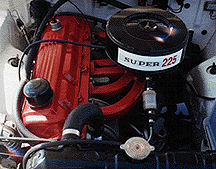 &
Ball carburettor pumping in the fuel. To this day it is renowned as one
of the most reliable, never say die engines ever built in America. It
was stated that because the engine was inclined to the right at an angle
of 30 degrees, a lower hoodline was permitted. Whether or not this was
so is left to be questioned, but it did allow for a very efficient inlet
manifold with long branches. For the first time an Australian car came
with an alternator instead of a generator, and instead of coil springs,
the Valiant came with torsion bar front suspension. Brakes were
hydraulic drums, front and rear and the spare wheel mould on the boot
was just that....a mould. The "real" wheel sat in a well in the boot.
&
Ball carburettor pumping in the fuel. To this day it is renowned as one
of the most reliable, never say die engines ever built in America. It
was stated that because the engine was inclined to the right at an angle
of 30 degrees, a lower hoodline was permitted. Whether or not this was
so is left to be questioned, but it did allow for a very efficient inlet
manifold with long branches. For the first time an Australian car came
with an alternator instead of a generator, and instead of coil springs,
the Valiant came with torsion bar front suspension. Brakes were
hydraulic drums, front and rear and the spare wheel mould on the boot
was just that....a mould. The "real" wheel sat in a well in the boot.
